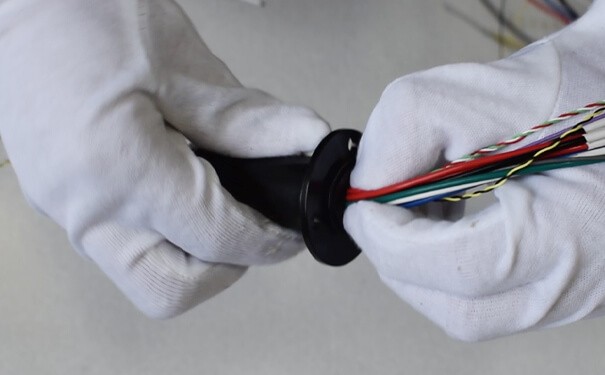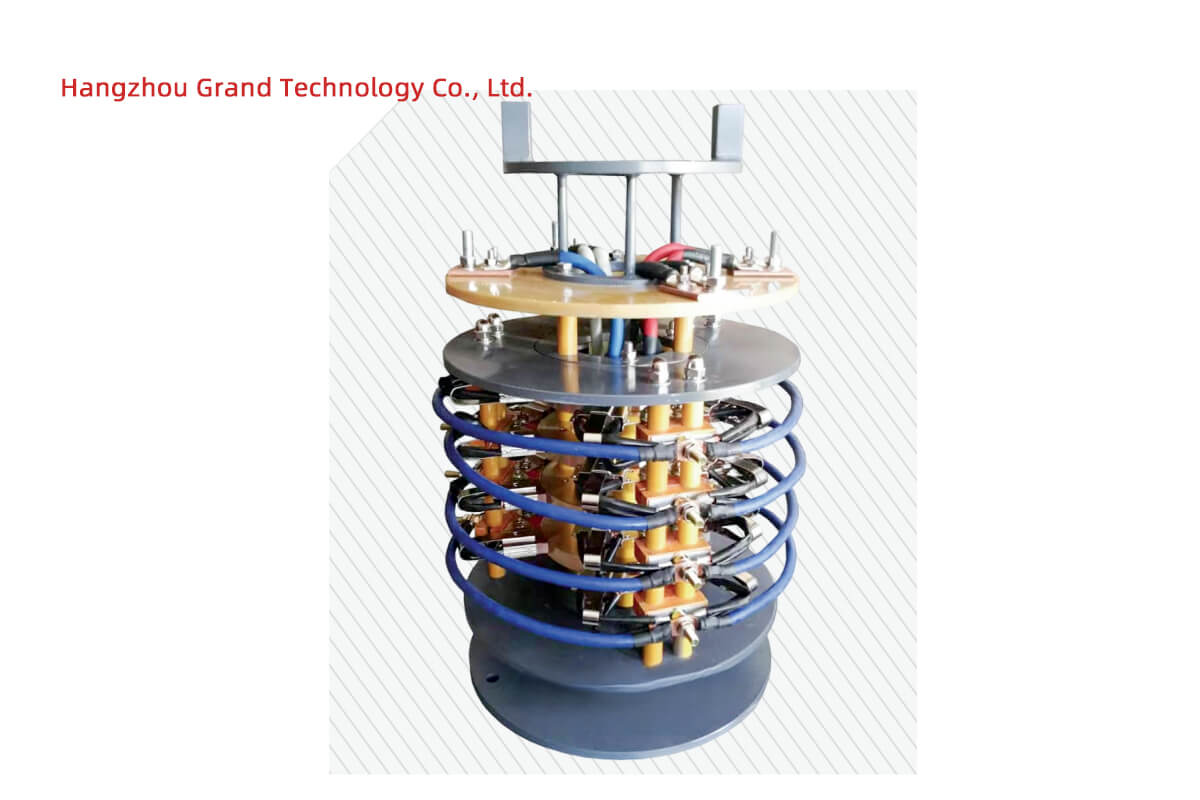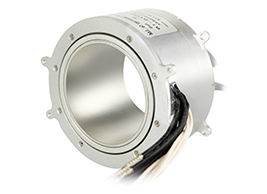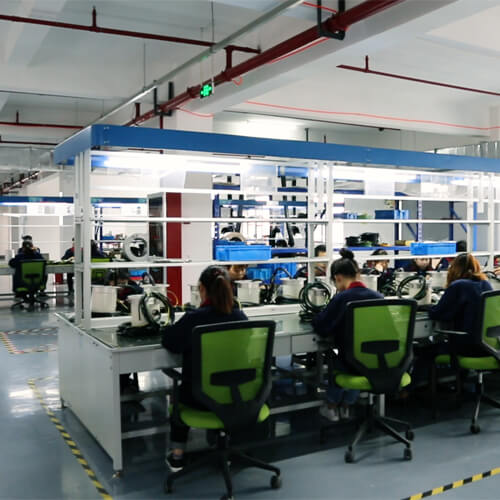Slip rings play a vital role in systems that require the transmission of power and electrical signals from a stationary to a rotating structure. Like any other mechanical device, slip rings require regular maintenance and eventual replacement to ensure optimal functionality. This article explores the means to carry out routine inspections, cleaning procedures, and identification of common issues. Furthermore, it helps you decide between repair and slip ring replacement, explains assembly and disassembly methods, provides insights on component replacement, and offers best practices for maintenance and replacement, alongside preventative measures.
Slip Ring Maintenance and Replacement: Routine Inspection
Regular inspection of slip rings is pivotal in maintaining optimal performance and preventing costly breakdowns. Routine inspection should be conducted at periods recommended by the manufacturer or as determined by the specific industry’s standards and operating conditions. The following aspects should be considered during routine inspection:
Visual Inspection
A thorough visual examination includes checking for wear on the slip ring surface and brushes, discoloration or pitting, foreign material such as dust and debris, and signs of overheating. Any visible damage or irregularities should be addressed and rectified immediately to prevent further complications.
Electrical Testing
To evaluate the slip ring’s electrical performance, perform tests for electrical noise, contact resistance, and voltage drop. Compare the test results to the manufacturer’s specifications or historical baseline values to identify any deviations from the expected values.

Mechanical Inspection
Examine the mechanical parts, such as bearings and brush holders, for wear, proper alignment, and smooth operation. Replace or service the components as necessary to maintain proper functioning.
Brush Inspection
Assess the length of the brushes and replace them if they have reached or are near their wear limit. Additionally, check the brush pressure on the slip ring surface to prevent abrasion and uneven wear.

Environmental Conditions Check
Ensure the slip ring operates under the recommended temperature, humidity, and dust levels as specified by the manufacturer. Excessive heat, moisture, or dust accumulation can lead to accelerated wear and reduced performance.
Lubrication
Assess the lubrication state of the slip ring, if applicable, and add or change the lubricant as specified by the manufacturer. Over-lubrication or the use of an incorrect lubricant can contribute to poor performance or cause issues with the slip ring operation.
By implementing a comprehensive routine inspection protocol, you can monitor the condition of your slip rings proactively and detect potential problems before they worsen or result in unforeseen downtime. In the long run, this can significantly extend the life of the slip rings, enhance overall system performance, and reduce maintenance costs.
Slip Ring Maintenance and Replacement: Cleaning and Lubrication
Maintaining a clean and well-lubricated slip ring is essential for its longevity and optimal performance. However, when it comes to cleaning and lubrication processes, specific steps and precautions must be followed to avoid unnecessary damage.
Cleaning Process
The slip ring’s surface can accumulate dust or debris over time, which can lead to contact wear and undesired interruptions in signal transmission. The cleaning process should include:
Dusting: Use compressed air or a soft brush to remove dust or loose debris from the ring’s surface. This should be the initial step in the cleaning process to avoid scratching the surface with debris during subsequent cleaning steps.
Wiping: Gently wipe the slip ring’s surface with a soft, lint-free cloth. If further cleaning is needed, the cloth can be dampened slightly with a mild, electrical contact cleaning solvent.
Verification: After cleaning, visually inspect the slip ring to ensure that all dust and debris have been removed. Also, make sure that the slip ring is dry before reassembling the mechanism.
Lubrication Process
Contrary to common belief, slip rings do not always require lubrication. Over-lubrication, in fact, can attract more dust and debris, leading to increased wear or even system failure. When it comes to the lubrication process:
Assess the Need: Ascertain if the slip ring requires lubrication. Slip rings applied in environments with high dust or moisture levels may need lubrication to protect against these factors.
Choose the Right Lubricant: If lubrication is necessary, make sure to use only the recommended type and amount as per the manufacturer’s instructions to prevent degradation in performance.
Application: Apply the lubricant evenly across the slip ring’s surface. Excessive lubrication should be avoided as it can attract contaminants and lead to increased contact wear.
Check: Regularly check the condition of the lubricant as part of routine maintenance. If it appears to be dirty or depleted, it may be necessary to clean the slip ring and reapply fresh lubricant.
Remember that proper cleaning and appropriate lubrication are essential elements of slip ring maintenance. Following the manufacturer’s guidelines on the processes will ensure that the slip ring operates efficiently and enjoys an extended lifespan.

Slip Ring Maintenance and Replacement: Identifying Common Issues
Timely identification of common issues associated with slip rings can greatly assist in minimizing downtimes and preventing potential operational failures. Familiarity with common warning signs and symptoms can help identify problems early and attend to them promptly. Here are some common problems to watch out for:
Excessive Noise
Any unusual or high-pitched noise from the slip ring indicates that something is amiss. This could be due to worn-out brushes, poor brush contact, or a damaged bearing.
Increased Contact Resistance
An increase in resistance is typically a sign that the quality of the contact between the brush and ring is diminishing. This may be due to the accumulation of contaminants, wear and tear, misalignment, or overheating.
Intermittent Signal Transmission
If the power transfer or signal transmission is intermittent, the slip ring could have worn-out or improperly seated brushes, a damaged track, misalignment, insufficient tension, or a dirty surface.
Brush Wear
Brushes are designed to wear gradually over time, but excessive or uneven wear can indicate problems such as unstable rotation, incorrect brush pressure, or poor-quality brushes.
Overheating
Slip rings are designed to operate within certain thermal parameters. Excessive heat could be a sign of overcurrent, extreme friction from incorrect brush pressure, or insufficient cooling in the system.
Surface Discoloration or Pitting
Any noticeable physical change in the slip rings such as discoloration or pitting might suggest issues with the electrical load, improper brush materials, or poor environmental control.
Vibration
Vibration beyond the normal level can indicate issues with balance, alignment, or the mounting of the slip ring.
Recognizing these warning signs at an early stage and taking immediate corrective measures can prevent minor issues from escalating into major problems that can lead to system failure. Always consult your system’s operation manual for a comprehensive understanding of potential problems and the recommended solutions, or contact your slip ring manufacturer or supplier for professional advice.
Slip Ring Maintenance and Replacement: Repair vs. Replacement
One of the key decision-making processes in slip ring maintenance involves determining whether a faulty slip ring should be repaired or replaced. Several factors must be taken into account when making this decision to ensure cost-effectiveness, reliability, and efficiency in operations:
Condition and Age of the Slip Ring
- Newer Slip Rings: If the slip ring is relatively new and has not been subject to heavy wear or extreme conditions, repairing it can be a cost-effective solution. Minor issues can often be resolved with basic maintenance or replacement of specific components, extending the slip ring’s lifespan.
- Heavily Worn or Aged Slip Rings: Conversely, a heavily worn or aged slip ring that has endured significant wear and tear may be beyond repair. In such cases, replacement is typically the more viable option, as continued use of a deteriorated slip ring can lead to further operational issues and higher long-term costs.
Cost Factor
- Repair Costs: Compare the cost of repairing the slip ring, including parts and labor, against the price of a new slip ring. If the repair costs approach or exceed the cost of a new unit, replacement is often the more strategic choice.
- Long-Term Investment: Consider the long-term financial implications. While repair may offer short-term savings, frequent repairs can accumulate costs over time, making replacement a more economical decision in the long run.
System Criticality
- Operational Importance: Assess the criticality of the slip ring to your operations. If a slip ring failure could lead to significant downtime, production losses, or safety hazards, opting for replacement can ensure consistent and reliable operation.
- Safety Concerns: For systems where safety is paramount, replacing a faulty slip ring can mitigate risks associated with unexpected failures, thereby safeguarding both personnel and equipment.
Recurring Issues
- Persistent Problems: If the same issue with the slip ring recurs despite regular maintenance and repair attempts, it may indicate an underlying, irreparable problem. Persistent failures can lead to unreliable performance, making replacement the more prudent option to avoid repeated disruptions.
- Root Cause Analysis: Conduct a thorough analysis to understand the root cause of recurring issues. If the problem is systemic and cannot be fully resolved through repairs, replacement is advisable.
Availability of Replacement Parts and Expertise
- Parts Accessibility: Repair is only feasible if the necessary replacement parts are readily available. Difficulty in sourcing parts can lead to prolonged downtime, which can be costly for critical operations.
- Technical Expertise: Ensure that skilled technicians with the required expertise are available to perform the repair. Lack of technical know-how can compromise the quality of repairs, making replacement a more reliable alternative.
Impact on Overall Performance
- System Efficiency: Evaluate how the slip ring’s condition affects the overall performance of the system. If performance has been steadily declining due to slip ring issues, replacing the slip ring can restore optimal functionality and efficiency.
- Performance Metrics: Monitor key performance indicators (KPIs) related to the slip ring’s operation. Significant drops in performance metrics can justify the need for replacement over repair.
Strategic Decision-Making
Making an informed decision on repair versus replacement not only affects the current state of your operations but also has long-term cost, efficiency, and reliability implications. Therefore, this process should involve technical experts who can provide detailed assessments and recommendations. Additionally, both short-term operational requirements and long-term strategic goals should be considered to ensure the chosen course of action aligns with the overall objectives of the organization.

Slip Ring Maintenance and Replacement: Disassembly and Assembly
Whether for repair, cleaning, or replacement, at some point the slip ring assembly may need to be disassembled and reassembled. While slip ring assemblies vary in design and complexity, the general guidelines below offer a generic sequence of steps to follow. Always refer to the manufacturer’s instructions for specific procedures as improper handling can potentially damage the unit.
Disassembly
Safety First: Unplug or disconnect the power supply before starting the disassembly to avoid electrical shocks and injuries.
Documentation: Make note of the assembly arrangement by taking a few pictures or making sketches. This helps ensure a correct reassembly.
Disassemble: Carefully remove the components, typically starting from the outermost layer and moving inward, making a note of the sequence. Pay close attention to the removal of the brushes since they can be fragile.
Organization: Put the removed parts in a tray or on a clean surface in an orderly fashion according to the sequence of removal. This helps keep track of the parts and makes reassembly easier.
Inspection: Once disassembled, inspect all parts for wear or damage.
Assembly
Cleanliness: Make sure all components are clean before reassembling. Dirt or dust can cause unnecessary wear and tear or create operational issues.
Reassemble Correctly: Follow the disassembly sequence in reverse order for reassembly. Ensure that all components are seated correctly and securely in their original position.
Brush Resetting: The brushes should be correctly placed so that they make good contact with the slip ring. Ensure that the brush pressure is adequate to maintain proper contact.
System Check: After reassembly, give the slip ring a manual rotation to ensure it turns freely and smoothly. Then, restore the power supply and check for proper operation.
Documentation: Update maintenance records with related details such as date, replaced parts, observations, and so on.
Completing a successful disassembly and assembly process will be beneficial for anyone who maintains slip ring systems. This process can contribute to system reliability, prolong the life of the slip ring, and help avoid system failures. But remember: it’s essential to carefully follow the manufacturer’s instructions and seek professional assistance if uncertainty arises.
Slip Ring Maintenance and Replacement: Replacing Components
Different components of the slip ring (like the contact ring itself, brushes, or bearings) may require a replacement due to wear and tear or failure. Each component replacement presents its unique set of challenges and requires an understanding of the system’s operation. Here are some general steps and guidelines for replacing slip ring components.
Brush Replacement
Identification: Determine which brush requires replacement. A worn-out brush will often display indications such as excessive wear, pitting, or an irregular profile.
Acquisition: Once identified, procure a replacement brush from a trusted source. Make sure to choose the exact specification of the brush as per the manufacturer’s recommendation.
Removal: Carefully remove the worn-out brush from its holder. Keep a note of the orientation and position of the brush for reference during the replacement.
Installation: Install the new brush ensuring that it is aligned correctly and makes good contact with the ring. Verify the spring tension to ensure it provides adequate pressure.
Testing: Test the connection to make sure the new brush is working efficiently. Carefully monitor the system during initial operation after brush replacement.
Ring Replacement
Evaluation: Identify the issue with the rings which can range from excessive wear and tear, damage, or deformation. Make sure that ring replacement is indeed required, as sometimes a simple cleaning might suffice.
Acquisition: Get a replacement slip ring from a trusted source based on the specifications provided by the manufacturer.
Removal: Take appropriate safety measures and then carefully remove the damaged ring, often involving disassembly of the unit. Remember to document the disassembly process.
Installation: Install the new ring in accordance with the manufacturer’s instructions. Make sure it is aligned correctly and the contact surface is clean.
Restoration: Reassemble the unit, making sure all components are properly aligned and installed. Check the brush contact with the new ring.
Testing: Run initial tests to ensure the new ring is functioning correctly.
The replacement of components, when carried out correctly, can extend the life of the slip ring and improve efficiency. Always follow the manufacturer’s instructions for the specific slip ring model to make sure correct procedures are used.
Slip Ring Maintenance and Replacement: Practices for Maintenance and Replacement
Maintaining and replacing parts of slip rings requires a methodical approach to ensure optimal working conditions and extend their lifespan. Here are some best practices for their maintenance and replacement:
Maintenance
Regular Inspection: Periodic inspection of your slip rings can help detect issues in their early stages. Both visual and electrical checks are crucial.
Proper Cleaning: Regularly clean the slip ring components to remove dust and other contaminants, which can cause issues over time.
Lubrication: Slip rings, especially those with bearings, need to be sufficiently lubricated to avoid excessive friction and overheating.
Measure Contact Resistance: Regularly measure the contact resistance of your slip ring. A continuous increase in resistance could indicate a problem.
Check Environmental Factors: Ensure the operating environment of the slip ring is within the advised range. Extreme conditions can affect the slip ring’s performance and longevity.
Replacement
Use Good Quality Replacement Parts: Always use premium quality replacement parts from trusted suppliers to maintain performance and increase service life.
Adhere to Manufacturer’s Instructions: For any replacement procedure, closely follow the manufacturer’s instructions to avoid inadvertent damage and to maintain the warranty.
Ensure Proper Alignment and Fitting: All components must be correctly oriented and securely fitted. Poor alignment can lead to premature failure.
Correct Tensioning: Ensure that brushes are fitted with the correct tension to maintain good contact with the ring. Over-tensioning can result in premature wear.
Post-Replacement Checks: After replacing any component, perform a comprehensive operational check to ensure proper functioning.
The goal of adhering to these best practices is to ensure that your slip ring performs at its best throughout its operational life, saving both time and cost.
Slip Ring Maintenance and Replacement: Preventative Measures
Preventative measures for slip ring maintenance and replacement aim to minimize the risk of component failure and extend service life. Taking appropriate steps in advance can prevent unscheduled downtimes and save costs. Here are some preventative measures to consider:
Regular Maintenance Schedule
- Routine Inspections: Establish a regular maintenance schedule in line with the manufacturer’s recommendations, considering the specific operational conditions of your application. Regularly inspect slip rings for wear, corrosion, and overall condition.
- Scheduled Maintenance: Perform scheduled maintenance activities, such as cleaning, lubrication, and component checks, to ensure the slip ring operates efficiently and reliably.
Temperature Monitoring
- Continuous Monitoring: Monitor the temperature of key components continuously using thermal sensors or infrared cameras. Excessive heat can be an early warning sign of issues such as poor contact, overloading, or bearing failure.
- Threshold Alerts: Set threshold limits for temperature increases and implement alert systems to notify maintenance personnel of potential problems before they escalate.
Vibration Monitoring
- Vibration Sensors: Install vibration sensors on the slip ring assembly to detect unusual vibrations or noise, which can indicate potential issues such as misalignment, bearing problems, or brush wear.
- Regular Analysis: Regularly analyze vibration data to identify and address issues at an early stage, preventing more severe problems and ensuring smooth operation.
Periodic Electrical Testing
- Performance Assessments: Conduct regular electrical tests to assess the performance of slip ring components, including contact resistance, insulation resistance, and dielectric strength.
- Deviation Tracking: Track deviations from normal ranges to identify impending issues and take corrective actions promptly.
Environmental Control
- Optimal Conditions: Ensure that the slip ring operates within recommended environmental conditions, including temperature, humidity, and dust particulate levels.
- Protective Measures: Implement proper sealing, ventilation, and environmental control measures to protect slip rings from harsh conditions and contaminants.
Correct Component Selection
- Application-Specific Selection: Select slip ring components that are appropriate for your specific application and usage. Components rated for higher current, speed, and temperature may offer longer service life and better performance.
- Quality Assurance: Use high-quality components from reputable manufacturers to ensure reliability and durability.
Training
- Proper Training: Provide comprehensive training to maintenance personnel to ensure they understand and follow correct procedures in handling and servicing slip ring components.
- Skill Development: Regularly update training programs to keep up with technological advancements and new maintenance techniques.
Proactive Record-Keeping
- Maintenance Logs: Maintain detailed records of all slip ring maintenance, repairs, and replacements. Include information such as dates, issues identified, actions taken, and components used.
- Trend Analysis: Analyze past maintenance records to identify trends and predict future issues, enabling more effective preventative measures.
Proactive and Consistent Approach
Taking these preventative measures can help minimize the possibility of failures in slip ring systems and extend overall component life. By reducing maintenance and replacement costs, a proactive and consistent approach to maintenance planning will ultimately contribute to enhanced system performance and efficiency. Implementing these strategies ensures that slip rings remain reliable and efficient, supporting the smooth operation of your machinery and equipment.
Need more information on our slip rings? Submit your inquiry here.
Conclusion
The activities of maintenance and slip ring repair are vital to boost the reliability and lifespan of the system. A profound understanding of the processes of disassembly and assembly, the timely repair of worn-out components, the employment of best practices in maintenance and repair, and the adoption of preventative strategies can significantly enhance the system’s performance. Regular inspections, appropriate cleaning, the correct application of lubrication, and monitoring environmental factors are critical for managing an efficiently operating slip ring. For the repair of slip rings, the use of superior-quality parts and strict adherence to the manufacturer’s instructions are advised.
By implementing preventative measures such as routine maintenance, temperature, and vibration monitoring, periodic electrical tests, and training, we can foresee and resolve potential issues before they escalate. Always remember to consult the manufacturer’s guide and seek professional assistance if needed. Regular and proper attention to these details leads to a well-maintained and functioning slip ring, ultimately affecting business productivity and cost-effectiveness.
FAQs about Slip Ring Maintenance and Replacement
Here are some frequently asked questions about slip ring maintenance and replacement:
Q: What are the symptoms of a failing slip ring?
A: Increased electrical noise, irregular transmission, excessive brush wear, and temperature elevation are common symptoms.
Q: How often should I clean my slip ring?
A: Cleaning frequency depends on the operating conditions. However, routine inspections can help determine the need for cleaning.
Q: Can I lubricate my slip ring?
A: Not always. Some designs demand lubrication while others don’t. For this reason, it’s vital to refer to the manufacturer’s guidelines.
Q: How do I know if my slip ring needs repairing or replacing?
A: Signs such as excessive wear or heat, and poor signal transmission worsen with time. If these problems persist despite continuous maintenance and intervention, it might be time for a replacement.
Q: Can I perform slip ring maintenance and replacement myself?
A: While some maintenance tasks can be performed in-house, it’s best to involve a professional for complex tasks to avoid causing more damage to the slip ring.
See What We Can Do


